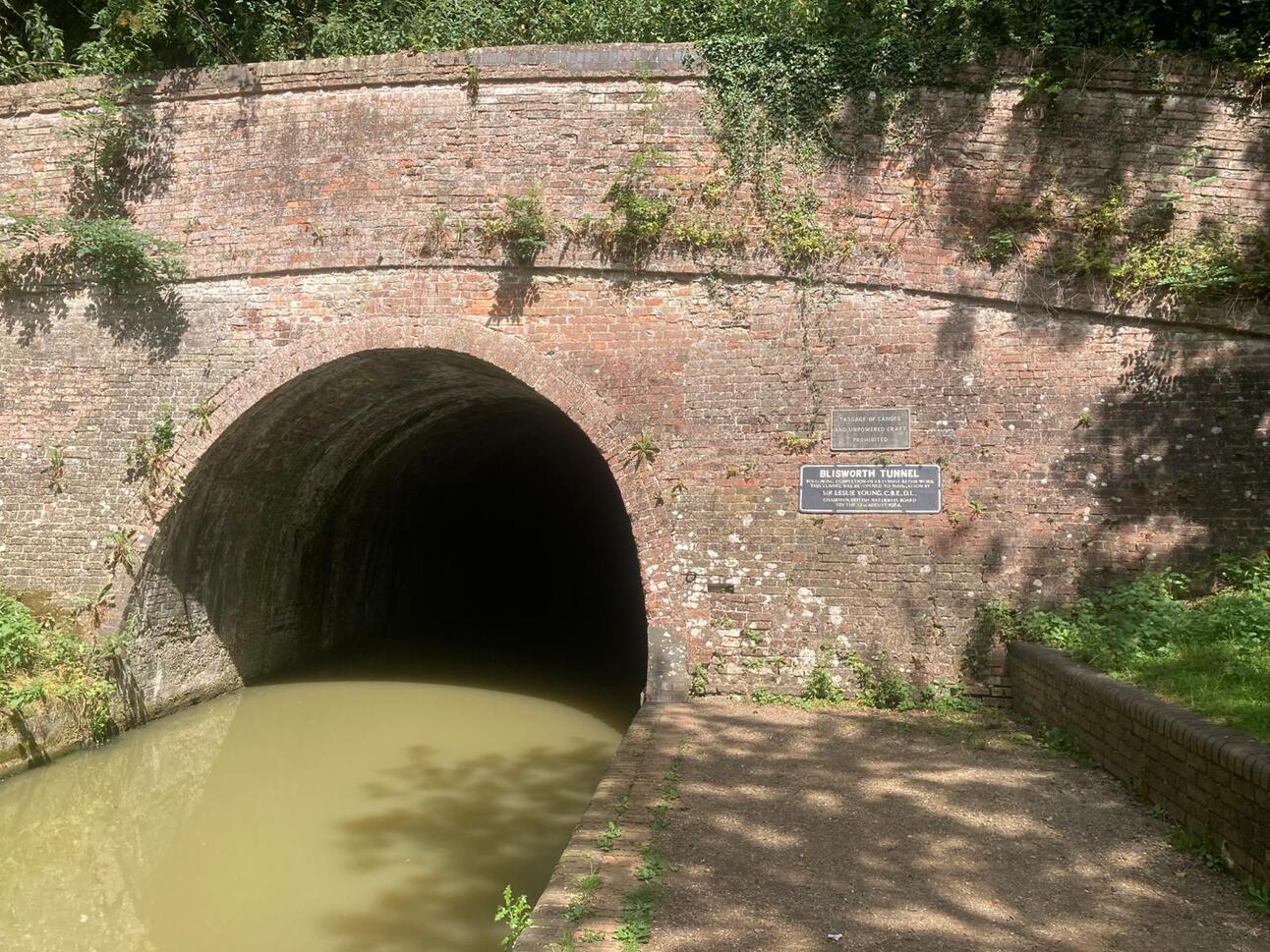It is a curious thing to move at walking pace through the heart of England, not by foot or by horse, but aboard a narrowboat nudging its way southwards on water once thick with coal dust and commerce. For seven days, on a return journey from Nuneaton to Stoke Bruerne, I travelled with my wife Jane, her aunt and uncle, Helen and Tim, and our stoic Siberian Husky, Sif, whose wolf-like gaze missed nothing.

What unfolds along these waters is not just a pleasant retreat into nature, but an immersion into a living tapestry of British history and environmental renewal.
Our boat glides past red-brick bridges and old wharfs, their fading names hinting at past labours. And as I take the tiller in hand, the wind tugging gently at Sif’s silver fur as he watches ducks with dignified curiosity, I’m reminded that these waters once thundered with the promise of empire.
From 1761 onwards, a frenzy of canal building overtook Britain. James Brindley, Thomas Telford, and other pioneering engineers criss-crossed the nation with locks, aqueducts and tunnels. Our journey echoes this legacy. In Braunston, we pass under a wrought iron bridge where canal workers once bartered wages. At Blisworth, we approach the grand tunnel, a mile and a half of echoing darkness that whispers the breath of those who once legged barges through by foot.

The entrance of the Blisworth Tunnel
None of us, of course, are old enough to remember the days when the canals thrummed with commercial life. But thanks to a well-thumbed guidebook, YouTube documentaries, and the Canal & River Trust app on our phones, we were able to trace their history, piecing together the past through screens and signage alike.
By 1840, Britain had over 4,000 miles of canals. Coal, grain, and pottery slipped across counties silently, fuelling a booming economy. Towns like Stoke Bruerne and Warwickshire’s many villages owed their prosperity to the traffic that passed beneath their stone bridges. But history, like the canals themselves, is never still for long.
The railways came with speed and steel, slicing through the canal era with ruthless efficiency. What had taken a barge days could be accomplished in hours by a locomotive. By the early 20th century, canal traffic had dwindled to a trickle. Boats sat idle, and wharves rotted. Some canals were filled in, others became stagnant ditches. Nature took back what industry had abandoned.
As we moor near Weedon Bec for the night, with swans gliding through the dusk and Sif curled at my feet, I reflect on this interlude in the canal’s story. The decades of dereliction were not an end, but a pause. For just as nature reclaimed these spaces, so too did communities.
One particularly memorable evening was spent moored near the Narrow Boat Inn, a popular canalside stop with a warm welcome. While Jane, Helen, Tim and I enjoyed hearty pub fare and a pint or two in the bar, Sif received his own special treat, a watermelon smoothie, chosen from an extensive ‘doggie menu’ that delighted both canines and humans alike. Watching him lapping it up, tail thudding against the floor reminded us how inclusive and well-loved these waterside communities have become.
In the second half of the 20th century, a quiet revolution began, one not of commerce, but of conservation. Walkers, anglers, and narrowboat enthusiasts began to see the canal network not as redundant relics, but as green corridors of potential. Restoration projects blossomed, often led by volunteers who cleared silt, rebuilt locks, and repurposed towpaths. The Canal & River Trust, formed in 2012, took the helm from British Waterways, and today oversees over 2,000 miles of navigable canals and rivers.

Everybody lends a hand or in this case a couple of paws
I am struck by how these spaces have shifted from industrial to ecological importance. Along our journey, kingfishers flit through willows, and dragonflies shimmer over the surface. The hedgerows hum with bees. These corridors have become sanctuaries for biodiversity, acting as wildlife highways amidst an increasingly fragmented landscape. They also serve as natural flood management systems, buffering towns from sudden deluges, a role likely to grow as the climate crisis accelerates.
Tomorrow, we continue toward Stoke Bruerne, where a museum now stands as a tribute to the canal age. But tonight, beneath a silvering moon, I sit with Jane, Helen and Tim swapping stories over a modest supper on deck, and Sif watching the ripples with quiet pride. It is a reminder that these spaces still connect people, not through trade or toil, but through time.
Please check back next week for the second instalment in my look at England’s Industrial waterways
Photos by Tim Hicks




